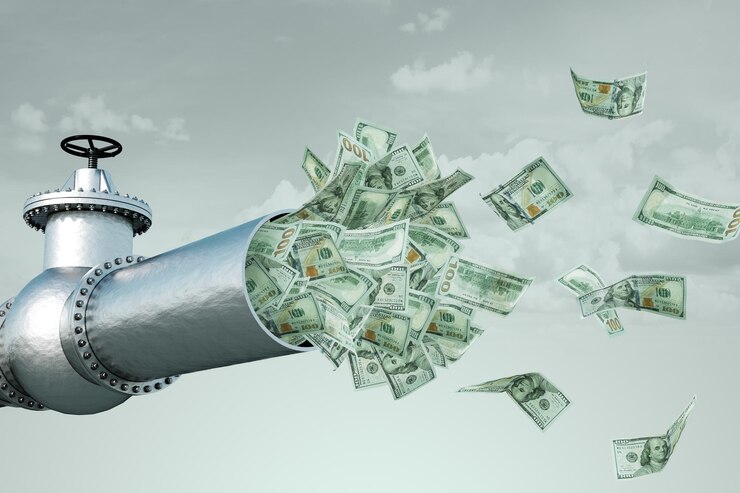4 Crucial Tips To Manage Cash Flow In Your Business

Cash flow is the money that moves into or out of your business over a period. It could be positive or negative. When it is positive, your earnings are higher than your spending, while a negative cash flow means you spend more than you earn.
Cash flow differs from revenue and working capital. Revenue is a one-way movement of money that comes into your business but cash flow is both the inflow and outflow of cash. While working capital is when money has accrued enough to take care of your financial responsibilities.
Two accounting methods govern cash flow: the cash accounting method, which is the documentation of your business dealings. This should tally with your business’ present cash reality. Second, the accrual accounting method is long-term financial documentation and will not match the cash reality when reviewed.
To achieve and maintain financial success, proper cash flow management is essential and will shape the future of your business. Learning cash flow management is the foundation for managing your business financially. This will solidify the root of your business, and you can think about increasing profit margins.
Business owners who have achieved success over the years have provided a well-put-together blueprint on how to manage cash flow to help small businesses or businesses in harsh conditions reevaluate their initial business strategies, and take a different approach to achieve faster results than they would have without the tips.
4 Tips For Managing Your Cash Flow

The paramount feature of cash flow management is continual monitoring. This way you are fully aware of money spent, money in use, and money to come. Some of the approaches to follow are:
1. Monitor money movement
Money movement involves debt, expenses, savings, and loans. Running into debt is sometimes unavoidable. It does not mean you are incapable, but it should be a temporary lurch until the business recovers. Debt should also be monitored so concentration is not channeled wrongly and you get into unmanageable debt.
Expenses are important to tame your miscellaneous spending. Only what is needed at the time should be paid attention to. Suppose plans have been made already on what a business may want, but its long-term effect could adversely affect the business, for example buying equipment. In that case, the expenses can be reduced to leasing instead with no fee credit card processing.
Savings should be at the top of the list of every business must-haves. It does not have to be precisely for a rainy-day situation, but also to ease prompt response to growth and expansion opportunities. This reserve cash would also give your business something to fall back on if an expected business development falls through.
2. Reexamine your business activity and performance
There are intervals when the business is blowing up with sales and profit, and there are slow sales periods. Reassessing the business operation plan, especially in slow periods will be useful in adjusting. Slow periods should already be foreseen ahead using a cash flow projection.
Identifying business areas that should be subcontracted to freelancers could save salary for months. If you own or run a brick-and-mortar business, and have little or no online appearance, you should consider revising it to assist you to reach e-commerce customers.
Being short-staffed, which could come from an attempt to bridge the slow business operation gap, introducing online marketing and delivery could lift your business. Your business plan should change in a changing economy so that slow business activity does not linger.
3. Pay attention to your profit percentage
Some business owners think that profits are gauged by how busy you are. Therefore, most of them spend time at their store day in and day out buying, selling, or replacing equipment to better suit their customers without having the time to check the profits they are making.
If you can, analyze your products bit by bit, and find out which products are making a great contribution and which are giving less impact on the profit margins. Then, you will be able to know what products to focus on, modify, rebrand, and make more appealing to the already available customers.
You can utilize artificial intelligence like an app or any other software to create spreadsheets that will keep you updated on profitability and when there is a shift in demand for your products.
Still, making profits is not equivalent to a good cash flow. Other factors such as taxation, inventory, accounts receivable and payable, and capital outlay contributes to cash flow.
4. Liquidate assets that strap your cash
Equipment that has not been in use or is used occasionally should be sold and money recovered used in canceling out debt or funding good business opportunities. Allowing the equipment to lie in waste is not beneficial. It will occupy space and tie up capital, thus, dragging cash flow.
In selling the equipment, you must take inventory of tax loss or gain incurred. With tax gain, you have sold the equipment higher than your book value, and the case is reversed for a tax loss.
Managing cash flow in your business should be an intentional and committed act. There needs to be a constant healthy cash circulation for long-term business success because profits become purposeless in the absence of cash flow.
Additionals:










